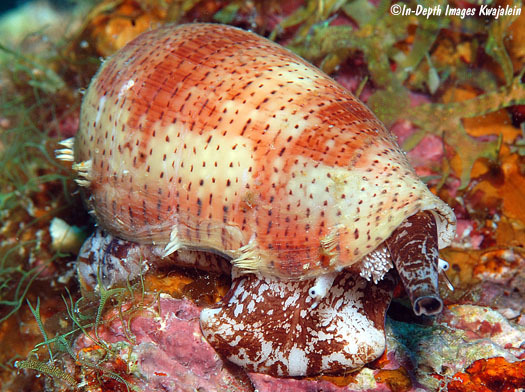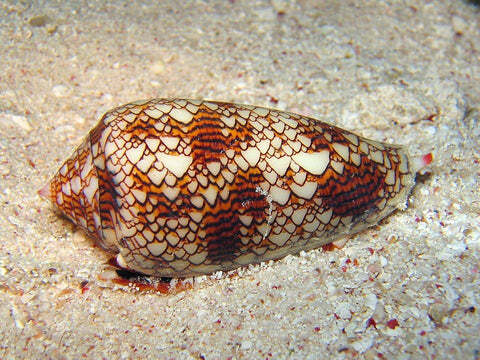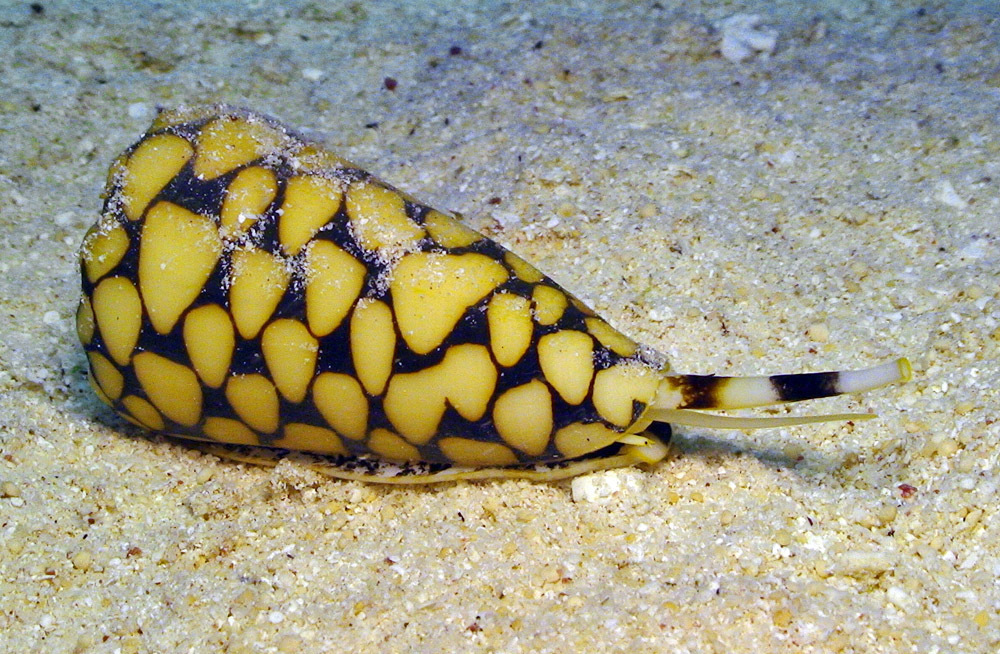DON'T GRAB THAT SHELL! : Venomous Ocean Mollusks That Hide in Plain Sight
SeashellSupply on 22nd Aug 2025
Not all seashells are safe to scoop up on a beach stroll. Some of the ocean’s most stunning mollusks pack a venomous punch, armed with toxins that rival snakes and scorpions. These slow-moving predators use chemical warfare to hunt—and sometimes defend.
Cone Snails (Genus Conus)
These elegant, cone-shaped shells are collector favorites, but their inhabitants are anything but passive.
- Shell: Typically conical with intricate patterns—some species like Conus textile and Conus gloriamaris are prized for their beauty.
- Venom Type: Peptide-based neurotoxins called conotoxins. These target ion channels and receptors in the nervous system, causing paralysis or even death in extreme cases.
- Habitat: Found in tropical and subtropical waters worldwide, especially in the Indo-Pacific region. They dwell in coral reefs, sandy bottoms, and intertidal zones.
The most dangerous species? Conus geographus, also known as the geography cone. It’s responsible for nearly all known human fatalities from cone snail stings.
How They Strike
Cone snails use a harpoon-like tooth to inject venom into prey—usually worms, small fish, or other mollusks. The venom acts fast, immobilizing victims before they can escape. For humans, a sting can cause numbness, muscle paralysis, and in rare cases, respiratory failure.
A Word of Caution

- Geographic Cone: (Conus geographus): Also known as the "cigarette snail," its venom can be fatal to humans.
- Textile Cone: (Conus textile): One of the most toxic, and a potential killer of humans.
- Tulip Cone: (Conus tulipa): Another highly dangerous species known for its potent venom.

- Alphabet Cone: (Conus catus): A known venomous species.
- Marbled Cone: (Conus marmoreus): A venomous species that is the type species for the genus Conus.
- Striated Cone: (Conus striatus): A large, dangerous species with venom potent enough to kill a human.
- Music Cone: (Conus musicus): A species known for its ability to "insta-kill" its prey due to conotoxin.
- Gloriamaris Cone: (Conus gloriamaris): Another venomous species in the Conus genus.

Safety Warning:
- All cone snails are venomous and should not be handled.
- Bright colors on a cone snail often indicate its venomous nature to warn predators, including humans.
- Be cautious of the snail's proboscis, a small organ that may stick out from the shell.
- There is no antivenom available for cone snail stings
Their shells may be mesmerizing, but these mollusks are best admired from a distance. If you spot a cone-shaped shell in warm waters, resist the urge to pick it up—your fingers might thank you later.
A safer bet? At Seashell Supply we have a wide selection of Cone Shells. Take a look and see what's available.

